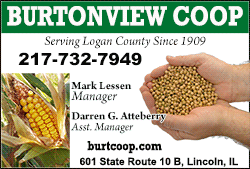|
Bristol's dramatic stage could receive jolt by new format
 Send a link to a friend
Send a link to a friend
 [April 21, 2017]
By Jonathan Ingram, The Sports Xchange [April 21, 2017]
By Jonathan Ingram, The Sports Xchange
Once a monument to stock car short
track racing with grandstands climbing to the sky like the
surrounding mountains, the Bristol Motor Speedway is looking to turn
around hard racing times.
In an era when promoters are removing seats, one of NASCAR's most
picturesque tracks retains its coliseum-type seating for two
reasons. First, it would be hard to remove sections of seats in a
way that would not blight the stadium. And second, last year's
Battle of Bristol NCAA football game sold in excess of 150,000
tickets.
In the good ol' days, a ticket to the "World's Fastest Half Mile"
was as tough as getting an invitation to The Masters. Those who had
season tickets held on to them and there was a long waiting list.
You had to know somebody to get in.
There were so many regular race fans that entire sections of the
grandstands knew each other like relatives. But demand for tickets
to Sunday's race, the eighth round of this year's Monster Energy
NASCAR Cup Series, is decidedly tepid relative to the number of
seats.
The new stage format will introduce two more additional
opportunities for drivers to race to the flag stand, maybe with some
bump-and-run. But will it be enough?
It's easy to trace the downturn of racing fortunes of the "The Last
Great Colosseum," located north of the Great Smokys near the
Tennessee side of the border with Virginia. The slowdown began when
the half-mile track was reconfigured in 2007 with graduated banking,
creating a two-groove race track.
In perhaps a sign of promoters' hubris at the time, fans were not
consulted about their passion for the single low groove tap-and-turn
track, where contact was a virtual necessity for passing.

Fans didn't like the new two-groove track with graduated 24-degree
banking that made for more polite racing. Further, there were other
developments that alienated fans. It was the dawn of the Great
Recession as well as the arrival of the Car of Tomorrow and Jimmie
Johnson's streak of five straight NASCAR championships. Johnson, who
now has seven championships, was well known for racing everybody
cleanly, even at Bristol.
For those who took exception to Gentleman Jimmie, the short tracks
were anathema to a new era of driving compared to the days of Dale
Earnhardt. The latter was known at Bristol for rattling roll cages
and for doing things like turning Terry Labonte around to get to
victory lane.
Once demand for tickets dwindled, the spring race at Bristol
suffered the most. The track could no longer force fans to buy the
spring race tickets annually as part of a package in order to renew
their tickets for the insanely popular night race in August. The
summer race still prevails in terms of preference, although it, too,
is hurting.
The track was repaved in 2012 in hopes of re-installing the single
groove aspect, but it didn't happen. Instead, the track gradually
developed a slower lower groove. It was the bottom of the "bottom
groove" malaise, which at one point got so bad that driver Brad
Keselowski chastised those in the media critical of the problem,
saying they were just trying to bump up readership and ratings.

[to top of second column] |

The racing fans have voted with their feet -- or
perhaps more accurately with their hands by sitting on them and
staying home. Meanwhile, football fans are awaiting the next
opportunity for a Battle of Bristol to take place in the slow-moving
world of NCAA football schedules.
Bristol, part of the Speedway Motorsports, Inc.
empire run by Bruton Smith, became the poster track for assuming
fans loved NASCAR racing so much they would put up with anything to
see it.
When times were good, traffic was bad due to the track's location on
a four-lane highway far from any interstate -- despite efforts to
manage it. Last summer, after a rain delay cleared much of the
60,000 in the crowd away early, the traffic was still bad.

On the other hand, traffic concerns and mediocre amenities didn't
stop over 150,000 football fans from showing up to see local rivals
Tennessee and Virginia Tech last September.
Now it's a matter of managing a difficult situation and trying to
recover a sense of trying to do what's right for fans. That includes
putting down resin last summer to improve speed in the lower groove.
The resin is similar to what is used to generate more traction on
Bristol's drag strip.
"They had a pretty good insight on what they needed to do to the
bottom after the Drivers Council and NASCAR got together and told
them what we thought we needed to do to try to make better racing at
Bristol," Kevin Harvick said in advance of this weekend's race. "So,
they were all in. This is just a classic example of collaboration
between SMI, NASCAR and the Drivers Council and seeing the outcome
of it was pretty exciting, just because of the fact it does open up
options."
Harvick said the resin treatment opened some eyes in August.
"The last few years we'd been there, you get on the bottom of the
racetrack and you are three- or four-tenths slower. Now you could
hold your ground and get past lapped cars. It gave everybody an
option to do something different, and as a driver, that's what you
want. You want options."
It is probably too much to ask that the stages introduced this year
by NASCAR, which have helped generate better competition, can bring
back the old Bristol. Nothing short of contact deciding the stages
at 125 and 250 laps as well as the race at the checkered flag after
500 laps is likely to make a big impression.

When the idea of Smith switching one of his race dates to the Las
Vegas Motor Speedway in 2018 first came up, Bristol was broached as
a track that might lose its spring date. Instead, one of the two SMI
races at the New Hampshire Motor Speedway was moved to the West.
Ironically, it may be the football game and its profits that kept
two dates at Tennessee's only NASCAR Cup track, which continues to
tinker with formulas for bringing back the old-time religion.
----------------------------------------------- [© 2017 Thomson Reuters. All
rights reserved.]
Copyright 2017 Reuters. All rights
reserved. This material may not be published, broadcast, rewritten
or redistributed. |